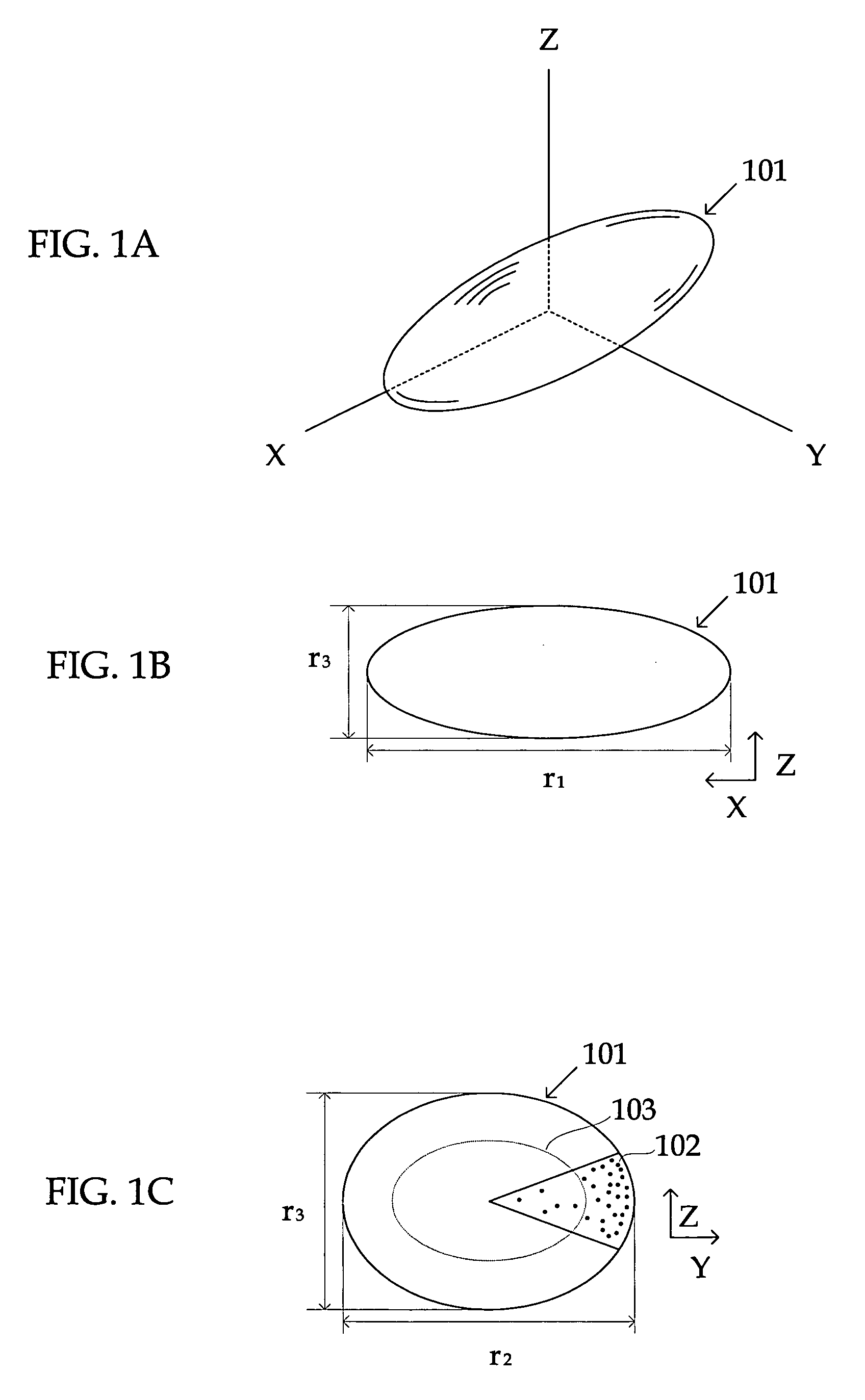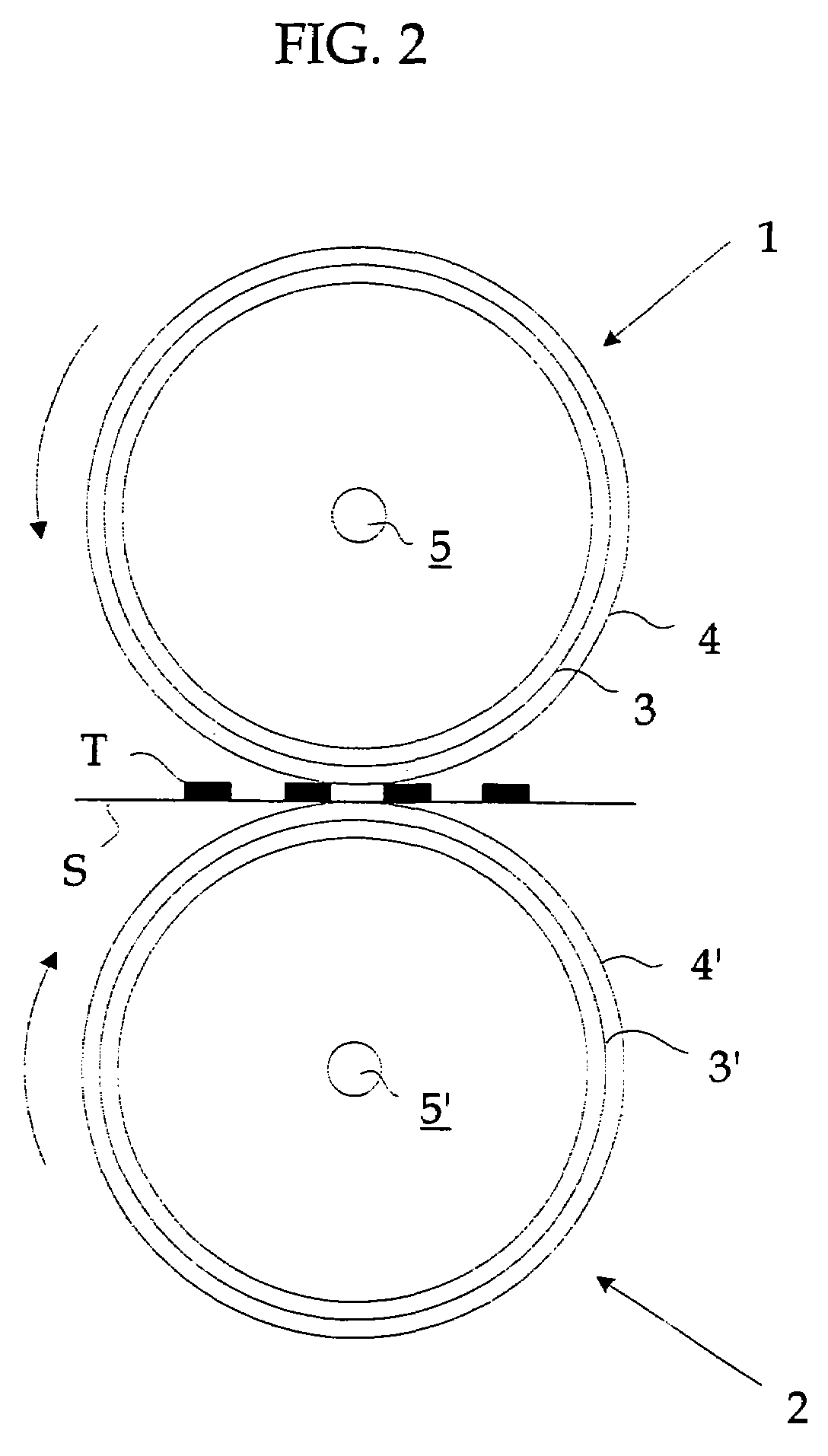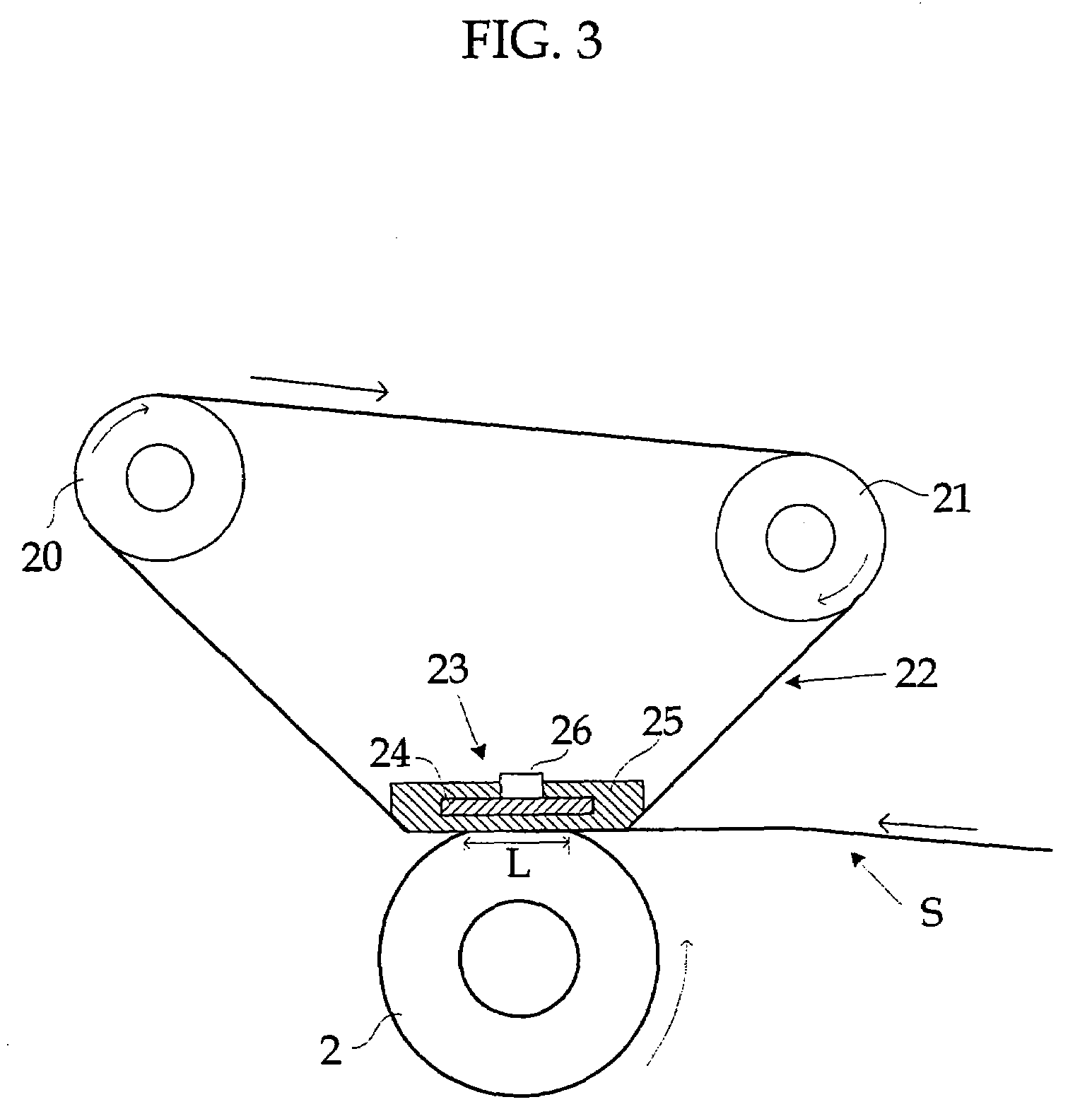Toner for electrophotography, developer using the same, process cartridge using the same, image-forming apparatus using the same, and image-forming process using the same
a technology for electrophotography and toner, applied in the field of toner for a developer, can solve the problems of insufficient fixing, excessive melting of toner, and adhesion of toner to the heat roller, and achieve the effects of improving fixing ability, low electric power consumption, and high quality
- Summary
- Abstract
- Description
- Claims
- Application Information
AI Technical Summary
Benefits of technology
Problems solved by technology
Method used
Image
Examples
example 1
[0178](Synthesis of Resin)
[0179]724 parts of bisphenol A ethylene oxide bimolar adduct, 276 parts of isophthalic acid and 2 parts of dibutyl tin oxide were introduced into a reaction vessel equipped with a condenser, stirrer and nitrogen inlet tube, were reacted under normal pressure at 230° C. for 8 hours, were reacted again under a reduced pressure of 10 to 15 mmHg for 5 hours and cooled to 160° C., then 32 parts of phthalic anhydride was added and the reaction was continued for 2 hours. Next, the reaction mixture was cooled to 80° C., and 188 parts of isohorone diisocyanate was added in ethyl acetate and reacted for 2 hours to obtain a pre-polymer (A) containing isocyanate. Next, 267 parts of the pre-polymer (A) and 14 parts of isohorone diamine were reacted at 50° C. for 2 hours to obtain a urea-modified polyester resin (u) having a weight average molecular weight of 64,000. In an identical manner to that of the above, 724 parts of bisphenol A ethylene oxide bimolar adduct and 2...
example 2
(Synthesis of Resin)
[0191]In an identical manner to that of Example 1, 334 parts of bisphenol A ethylene oxide bimolar adduct, 334 parts of bisphenol A propylene oxide bimolar adduct, 274 parts of isophthalic acid and 20 parts of anhydrous trimellitic acid were condensation polymerized, and reacted with 154 parts of isohorone diisocyanate to obtain a pre-polymer (2). Next, 213 parts of the prepolymer (2), 9.5 parts of isohorone diamine and 0.5 parts of dibutylamine were reacted in the same way as that of Example 1 to obtain a urea-modified polyester resin (2) having a weight average molecular weight of 52,000. 200 parts of the urea-modified polyester resin (2) and 800 parts of the non-modified polyester resin (a) were dissolved in 2,000 parts of ethyl acetate / MEK (1 / 1) mixed solvent, and stirred to obtain an ethyl acetate solution f the resin (2). Part of this solution was dried under reduced pressure to isolate the resin (2). Tg was 65° C., the acid value was 10, and the peak molec...
example 3
(Synthesis of Pre-Polymer)
[0200]724 parts of bisphenol A ethylene oxide bimolar adduct, 250 parts of isophthalic acid, 24 parts of terephthalic acid, and 2 parts of dibutylene oxide were introduced in a flask equipped with a cooling tube, stirring rod and nitrogen supply tube, and were allowed to react at 230° C. under normal pressure for 5 hours. Thereafter, the resulted mixture was further reacted under a reduced pressure of 10 mmHg to 15 mmHg for 5 hours while dewatering. The reaction mixture was cooled to 160° C. and 32 parts of phthalic anhydride was added therein for 2 hours to react. The reaction mixture was further cooled to 80° C., was reacted with 188 parts of isophorone diisocyanate in ethyl acetate for 2 hours. A pre-polymer (3) containing an isocyanate group was hence prepared.
(Synthesis of Ketimine Compound)
[0201]30 parts of isophorone diamine and 70 parts of methylethyl ketone were introduced into a flask equipped with a stirring rod and thermometer, and are allowed t...
PUM
 Login to View More
Login to View More Abstract
Description
Claims
Application Information
 Login to View More
Login to View More - R&D
- Intellectual Property
- Life Sciences
- Materials
- Tech Scout
- Unparalleled Data Quality
- Higher Quality Content
- 60% Fewer Hallucinations
Browse by: Latest US Patents, China's latest patents, Technical Efficacy Thesaurus, Application Domain, Technology Topic, Popular Technical Reports.
© 2025 PatSnap. All rights reserved.Legal|Privacy policy|Modern Slavery Act Transparency Statement|Sitemap|About US| Contact US: help@patsnap.com



